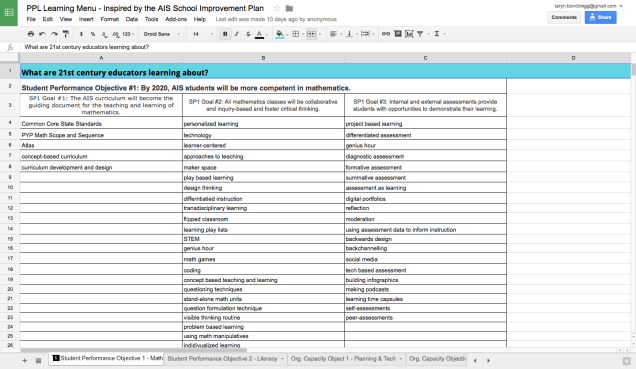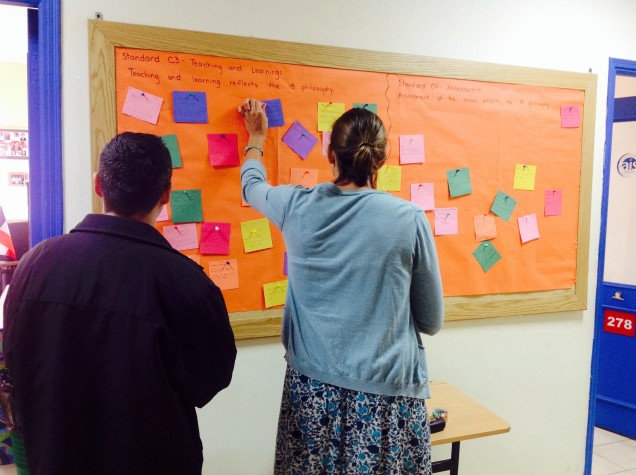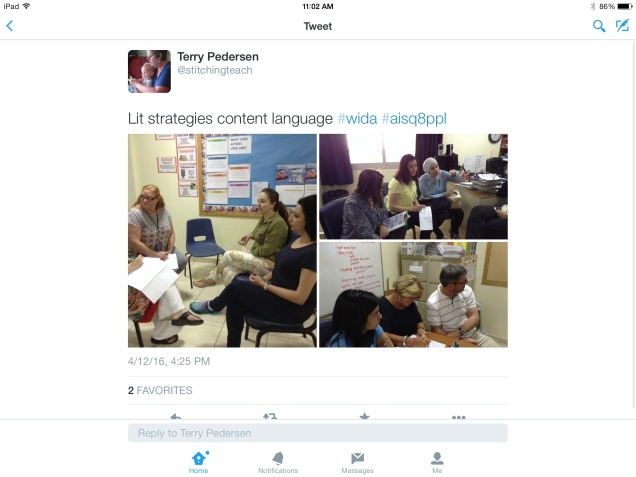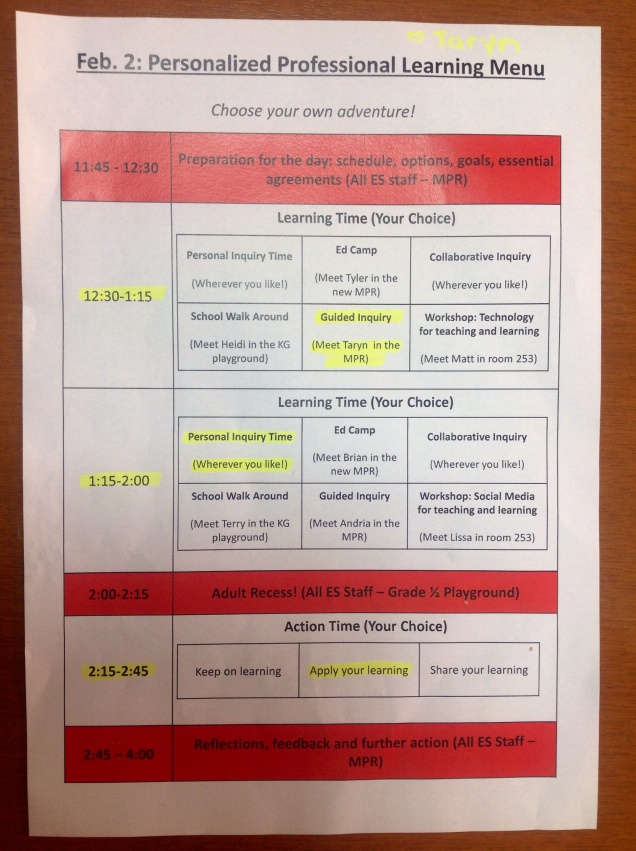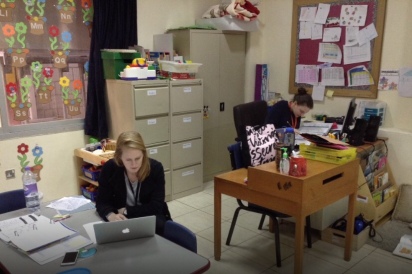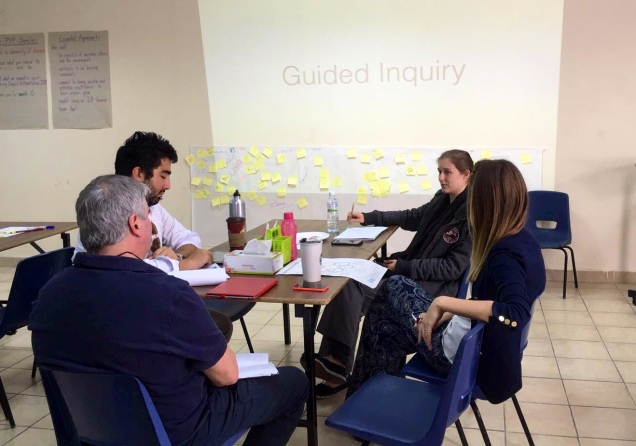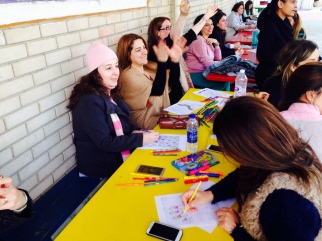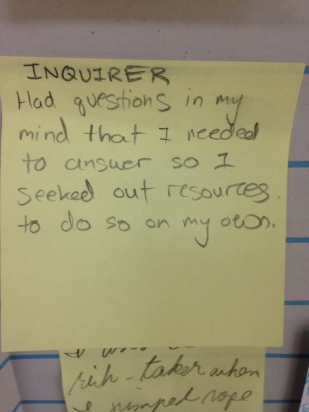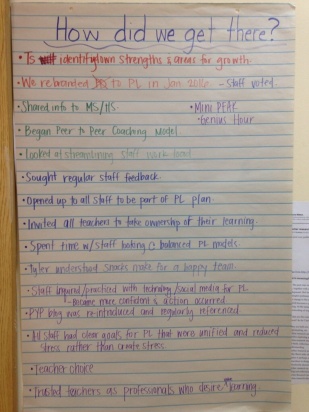During this past year I have blogged about our first attempt at a half day of Personalized Professional Learning, then I wrote about our second iteration of Personalized Professional Learning. Now the big question… what’s next?
I think the next step is turning this model of PPL into the basis for a year long PD plan.
This is the time of year that school teams are meeting to design professional development action plans for next year. If it were up to me, I would design the structures and systems to allow for a whole year of personalized professional learning. Usually, I blog about ideas I have tried and put into practice. This post will be the opposite. It will be about an idea – in the earliest phases of conception – that is purely hypothetical. At this stage, simply a vision. Nothing more. Yet.
So here is my vision. I’d love to know what you think!
The start of the year – tuning in:
Before a classroom teacher introduces a new unit on body systems, or fractions, or procedural writing, they (should) first tune into what their students already know and already can do. Why should planning for professional development be any different? Before any administrator or school leader even thinks about teaching/training/developing their staff in a specific area – inquiry, assessment, strategies for language development – they too should tune into what their teachers already know and can do. This is not only important diagnostic assessment data for leaders, but equally important to help teachers become explicitly aware of what they already know and can do. But how? I have a few ideas…
- A professional learning time capsule – Many teachers use the idea of time capsule to help students’ tune into what they already know. Why couldn’t the same diagnostic strategy be used for teachers? Administrators and leadership teams could take their school improvement plan goals and IB action plan goals and create an open-ended diagnostic assessment where teachers reflect on what they already know and can do as it relates to the prioritized topics of professional development for that year.
- A professional self-assessment – For each area of the time capsule, teachers could indicate on a spectrum (beginning, developing, competent, extended) where they think their professional knowledge and practice lies


- Personalized professional learning objectives – After completing the time capsule and assessing what they already know and can do, teachers can look for potential areas of growth in their own professional development within the context of school chosen areas of focus. These self-identified areas for growth could then be turned into personalized professional learning objectives – or what is commonly known in adult education as learning contracts. If based on the time capsule and self-assessment, a teacher realized they have beginning understanding of inquiry-based teaching they would then create personalized professional learning objective about inquiry-based teaching.
- Personalized professional success criteria – Once teachers have systematically identified their own areas for professional growth – based on the areas of professional development the school has prioritized for that year – and have created a list of personalized professional learning objectives, they could then develop their own success criteria, to specifically describe what the successful attainment of each learning objective would look like. Creation of success criteria would answer the question, “How will you know you have achieved your learning objective?”

- Personalized professional learning conference – If a teacher was asking a student to complete a self-assessment it would be followed up by a conference where the teacher reviews and reflects on the student’s assessment with the student. A teacher’s self-assessment should be no different. After teachers have self-assessed their learning time capsule, set their own learning objectives and developed their own success criteria they could meet with an administrator or a member of the leadership team to review their personalized professional learning plan. This is where leaders can review the time capsule and have conversations with teachers to uncover misconceptions and gaps in professional knowledge that teachers may not have identified for themselves. For example, if a teacher has self-assessed that they have a competent understanding and skill set to support English Language Learners, but through reviewing the time capsule and having a conversation the leader thinks there is more room to grow, the leader can suggest the teacher adds it to their personalized professional learning plan.
If this seems like a long, time consuming process that’s because it is. Tuning in is not something to be rushed in order to get on with the learning. Like Kath Murdoch says, it IS the learning. Taking the time to build a diagnostic assessment tool around the school improvement plan goals and IB action plan goal, then allowing staff to self-assess against those areas and become aware of their own learning and then having teachers meet with a school leader to discuss their personalized professional learning plan are essential steps in setting the stage for the rest of the year of personalized professional learning.
Throughout the year – Finding out, Sorting out, Going further:
Once you have the personalized learning plans set, you can use those as the basis for ALL professional development times throughout the year – after school meetings, half days, full days… any time! How, you ask? I have a few ideas…
- Selecting a focus or two – Before a professional development day or afternoon, it would be important to help teachers select one or two areas of their professional learning that they would like to focus on. We have done this two different ways during our first iteration of PPL and our revised model of PPL and both proved to be effective. If teachers already had a list of personalized professional learning objectives, they would only need to refer to the list and choose the one or two areas they felt most passionate about.
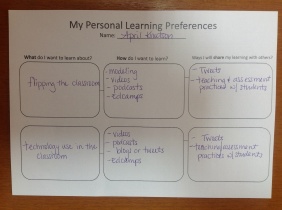

- Planning in response to learning – Once teachers have identified what they want to learn about it, leaders could collect data about how teachers want to learn. Personal inquiry? Collaborative inquiry? Workshops? Meeting with an instructional coach? Gathering data about how teachers want to learn can then be used to build a structure for a day or afternoon that supports personalized professional learning.


- Let the learning happen – Once the day is planned and teachers know what they want to learn about and how they want to learn… get out of the way and let the learning happen!
- Assessing the learning –Once the day or afternoon is finished, teachers could refer back to their success criteria and reflect on whether they have met their targeted learning objectives of the day, or whether they need to continue to pursue further learning opportunities.
- Repeat – The next time another scheduled PD day rolls around again, have teachers refer back to their personalized professional learning objectives select one or two objectives they would like to start working on (or continue working on), plan the structure of the day in response to the needs and preferences of the teachers, let the learning happen and then build in time for assessment of progress.
This process could be used every time there is the opportunity for professional development. Once the systems and structures are in place, there is minimal planning that needs to be done by the leadership team. Isn’t that the sweet spot of inquiry – low prep for “teachers”, high engagement, ownership and learning for “students”? There are also some great opportunities for formative assessment and feedback throughout the year. Bring out the time capsules half way through the year and have teachers add, change and remove things to better reflect what they know and can do now. Or have a mid-point conference with the same leader as the beginning of the year discuss progress and growth.
At the end of the year – Making conclusions:
By the end of the year, there should be so much growth and progress for each and every teacher to reflect on, celebrate and share! Wondering how? I have a few ideas…
- Revisit their professional learning time capsule – Provide all teachers with either a blank copy of the same time capsule you used at the beginning of the year, or the actual time capsule they filled in and let them update their time capsule to reflect all that they have learned over the year. This will be a great way to help make their learning visible.
- Self-assessment – For each area of the time capsule, teachers could indicate where they are now with regards to their professional knowledge and practice. Hopefully this would allow teachers to see that in certain areas they have moved themselves along the spectrum. Teachers could also reflect on their success criteria and evaluate whether or not they have met the success criteria for each of their personalized professional learning objectives. If there is criteria that is not met (yet), that could be a great starting point for the following year’s personalized professional learning plan!
- Share and celebrate – Provide teachers with time to consolidate their learning and decide what they want to share with their learning community. Using the RAFT format can be quite helpful to allow teachers to choose what they want to share and how they want to share it. Sounds like the potential for a mini teacher Exhibition!
I’m a firm believer that every single thing we expect from teachers in the work they do with their learners – assessment, inquiry, differentiation, personalization, learner voice and choice, reflection, ownership, action – should be purposefully modeled in the work leaders do with their learners. I think this model presents a way to allow for all of the aforementioned best practices, while at the same time working towards school-wide goals and objectives. Teachers are doing a great job helping their students reach standardized curricular goals and objectives in inquiry-based, differentiated ways. School leaders can and should be doing the same in their models of professional development.
I realize that I have referred to the learners as “teachers” throughout this blog post. I think this model could work for an entire school community. Every staff member – counselor, TA, coordinator, administrator, coach – could participate in all of these activities and develop themselves as professionals. In fact, the leadership of a school should be intentionally modelling this process for the staff and should be positioning themselves as the lead learners.
What am I missing?
Where are the gaps and weaknesses in this model of PD?
How could I refine this vision to further support teachers as learners while meeting school goals and objectives?

